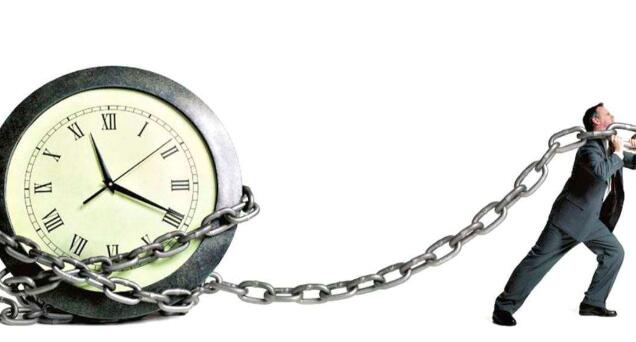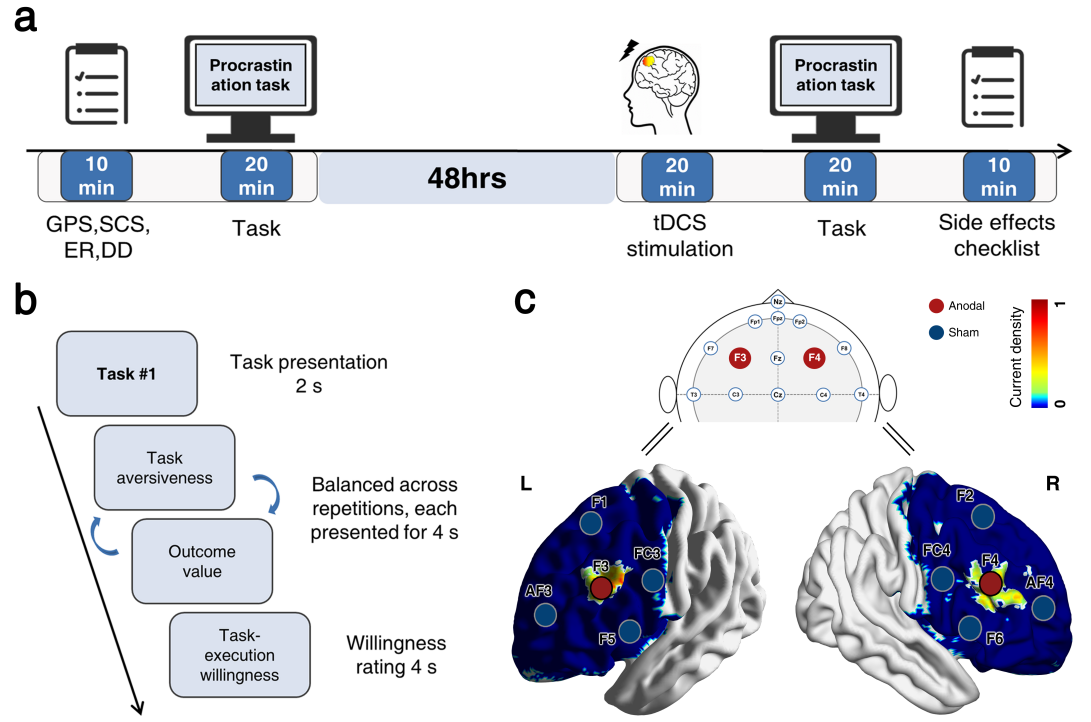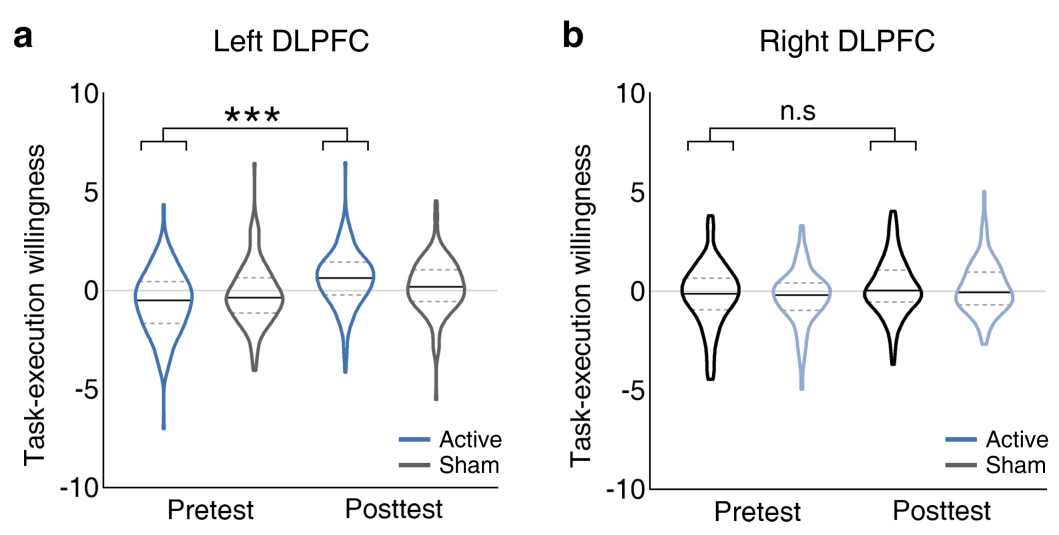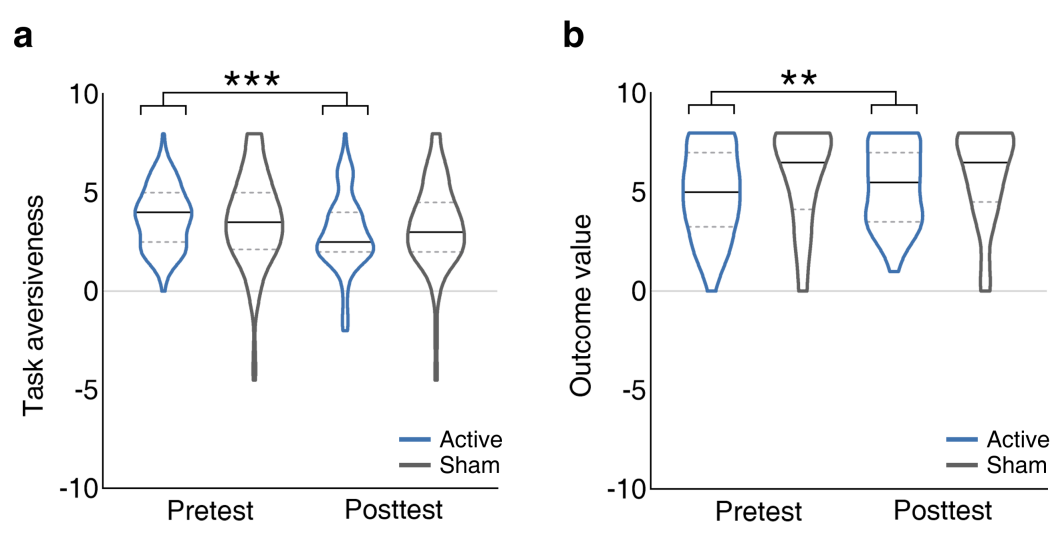古有“我生待明日,万事成蹉跎”劝勉人们珍惜时间,把握当下,今日事今日毕。然而,随着时代节奏的加快,拖延问题越发严重,跨文化研究表明:15%~20%的成年人存在慢性拖延(Ferrari, 2005),超过70%的学生承认自己存在学业拖延(Janssen, 2015),其中严重学业拖延约占16%(李玉华,冯廷勇*,2021)。拖延(Procrastination)是指尽管预见到会带来不利后果, 人们仍自愿推迟开始或完成某一计划好的任务(Steel, 2007)。大量研究表明,拖延不仅会损害个体的学业表现和工作成就(Kim et al., 2017),还会对人们的身心健康造成危害,例如引发焦虑、自责、自我否定等负性情绪(Sirois, 2014),进而破坏免疫系统、加重心血管疾病等(Sirois, 2015)。因此,探明拖延行为产生的核心机制以及如何有效的临床干预具有十分重要的科学价值和现实意义。

近日,国际心理学顶级期刊(实验心理学旗舰杂志)《Journal of Experimental Psychology: General》(中科院SSCI 1区Top)在线发表了冯廷勇教授团队题为“Stimulation of left dorsolateral prefrontal cortex enhances willingness for task completion by amplifying task outcome value”的学术论文。该论文基于团队原创的拖延时间决策模型(temporal decision model of Procrastination)从神经调控的因果视角首次证明,使用高精度经颅直流电(HD-tDCS)刺激左侧背外侧前额叶皮层(dorsolateral prefrontal cortex, DLPFC)能够提高个体的任务执行意愿,降低拖延行为。
拖延的时间决策模型认为,当人们(当下)对任务(例如:准备考试)的厌恶感(任务厌恶)超过对任务远期结果(例如:取得好成绩)的渴望程度(结果价值)时,就会拖延该任务,反之则会立即执行该任务;然而,自我控制能力能够在任务负性过程和任务正性结果的权衡中起调控作用(S. Zhang & Feng, 2020)。DLPFC被认为是自我调控的关键脑区,在跨期选择、情绪调节等发挥重要作用(Zilverstand, Parvaz, & Goldstein, 2017)。冯廷勇教授团队先前研究中也发现,以背外侧前额叶(DLPFC)和前扣带回(ACC)为核心节点的自我控制网络,在拖延行为中扮演中重要作用(Chen & Feng*, 2020, Cerebral Cortex)。因此,本研究采用 2时间(前测 VS 后测)×4组别(阳极刺激左侧DLPFC、伪刺激左侧DLPFC、阳极刺激右侧DLPFC、伪刺激右侧DLPFC)的混合实验设计,基于课题组拖延大数据库筛选并招募了高拖延被试,收集了被试对个人真实任务的任务厌恶、结果价值以及任务执行意愿等变量数据(见图1)。

图 1:实验流程、任务范式及刺激皮层位置
研究结果显示,HD-tDCS阳极刺激左侧DLPFC后,被试的任务执行意愿相较于前测有显著提升,而伪刺激左侧DLPFC,阳极刺激右侧DLPFC,伪刺激右侧DLPFC组被试的任务执行意愿在刺激前后均无显著差异(见图2)。这说明,HD-tDCS阳极刺激左侧DLPFC能够有效提高个体的执行意愿,降低拖延行为。

图 2:HD-tDCS刺激DLPFC对任务执行意愿的效应
基于此,该研究进一步探究阳极刺激左侧DLPFC是否会改变被试的任务厌恶和任务结果价值。结果显示,与前测相比,HD-tDCS阳极刺激左侧DLPFC后,被试的任务结果价值显著提高而任务厌恶有显著降低。然而,伪刺激左侧DLPFC组被试的任务结果价值、任务厌恶在刺激前后测均无显著差异(见图3)。

图 3:HD-tDCS刺激DLPFC对任务厌恶、结果价值的效应
为分离任务厌恶、结果价值对执行意愿的影响,该研究采用了因果中介分析,以探索在控制随机效应项(例如个体化事件)后,在阳极刺激左侧DLPFC组,任务厌恶或结果价值是否可以中介刺激对任务执行意愿的影响。结果显示,在控制随机效应项的影响后,阳极刺激左侧DLPFC通过增加被试的任务结果价值提升其对任务的执行意愿(见表1)。这说明,阳极刺激左侧DLPFC有效提高个体的执行意愿主要是通过提升任务结果价值来实现的,探明其作用的认知机制,这为拖延的神经调控干预指明方向并提供了实验证据,具有重要的临床价值或启示。
表1. 因果中介分析结果
Mediator |
ATE (95% CI) |
ADE (95% CI) |
ACME (95% CI) |
Proportion mediated (95% CI) |
Outcome value |
1.05 (0.54, 1.56)*** |
0.90 (0.39, 1.41)*** |
0.15 (0.04, 0.30)** |
0.14 (0.04, 0.34)** |
Task aversiveness |
1.07 (0.60, 1.53)*** |
0.91 (0.41, 1.41)*** |
0.16 (-0.02, 0.37) |
0.15 (-0.02, 0.40) |
注:ATE-average total effect, 平均总效应;ADE-average direct effect,平均直接效应; ACME-average causal mediation effect, 平均因果中介效应。
论文的第一作者为西南大学毕业硕士生许婷(现电子科技大学生物医学工程专业博士生),共同一作为西南大学毕业博士生张顺民(现浙江大学心理与行为科学系研究员),冯廷勇教授为通讯作者。该研究得到国家自然科学基金面上项目(31971026,32271123)、青年基金项目(32100870),中央高校基本科研业务费(SWU2009104),西南大学创新研究2035先导计划(SWUPilotPlan006)的资助。
近5年来冯廷勇教授团队在拖延行为的认知机制和神经基础以及无创神经调控干预方面进行了系统研究,已在 Journal of Experimental Psychology: General、Cerebral Cortex、Neuroimage、Human Brain mapping、Cortex、Neuroscience(入选Science杂志editors’ choice,2017)、WIREs Cognitive Science(editor约稿的观点性综述,2019)等国际著名杂志发表数十篇论文,在国际拖延领域产生了重要的影响。
论文索引:
Xu, T., Zhang, S., Zhou, F., & Feng, T. (2022). Stimulation of left dorsolateral prefrontal cortex enhances willingness for task completion by amplifying task outcome value. Journal of Experimental Psychology: General,https://psycnet.apa.org/doi/10.1037/xge0001312.
原文摘要:
Procrastination, an irrational delay of intended action, has caused harms in many life domains. Although procrastination has a robust link with the dorsolateral prefrontal cortex (DLPFC), the causal role of DLPFC in this behavior remains unclear. A recent temporal decision model (TDM) proposed that people pit task aversiveness against outcome value to decide to procrastinate or not. In short, people would procrastinate if task aversiveness has a stronger effect than outcome value. According to the TDM, the DLPFC might reduce procrastination by inhibiting task aversiveness, or amplifying outcome value, or both. The present study tested those possibilities by investigating whether brain stimulation on DLPFC changes procrastination and its underlying mechanism. One hundred and three participants with high procrastination were randomly assigned to receive either active or sham stimulation over the left (active, n = 27; sham, n = 27) or right (active, n = 25; sham, n = 24) DLPFC and rated task aversiveness, outcome value and task-execution willingness toward their self-planned real-life tasks before and after stimulation. We found that active stimulation of the left DLPFC significantly boosted task-execution willingness. This left DLPFC stimulation also changed subjects’ evaluation of tasks such that decreasing task aversiveness and increasing outcome value. Causal mediation analyses further revealed that stimulation of the left DLPFC enhances willingness for task completion through increasing outcome value. Overall these results provide the first evidence that neuromodulation of the left DLPFC could improve timely task-execution willingness via increasing the outcome value, which offers new insights for treating individuals with severe or even pathological procrastination.





